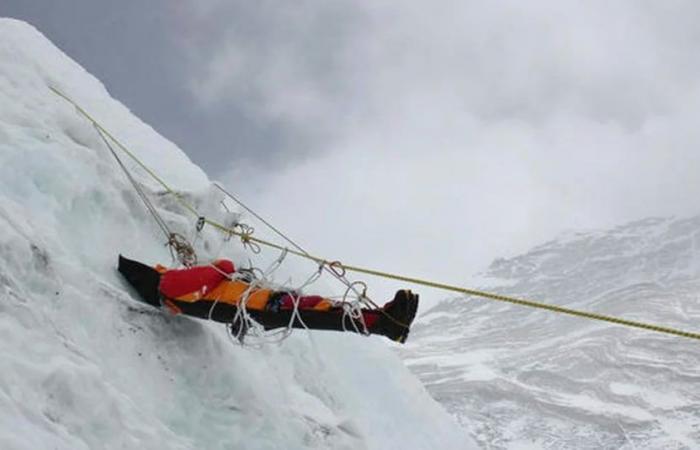With the melting of the ice in it Mount Everesthe climate change is increasingly exposing the bodies of the hundreds of mountaineers who lost their lives in their attempt to reach the highest peak in the world. This phenomenon has led a team of rescue Enter the dangerous altitudes to recover some of these corpses.
This year, a team not seeking to reach the 8,848-meter summit embarked on a risky mission to recover the remains of those who perished on the mountain. As part of a Nepalese government-sponsored mountain cleanup campaign, five bodies were recovered, including one with only skeletal remains.
The task is complicated and dangerous. Rescuers need hours to remove ice using pickaxes and sometimes must use hot water to free bodies. More of 300 people have perished on the mountain since the expeditions began in the 1980s. 1920and only this season there was eight victims.
Many bodies remain hidden by snow or in deep crevices. Others, still in their colorful climbing gear, have become points of reference on the route to the top. These landmarks are nicknamed “Green Boots” and “Sleeping Beauty”.
Aditya Karki, a Nepalese army major who led the team of 12 soldiers and 18 climbers, said: “Due to the effects of global warming, bodies and trash are becoming more visible as the layer of debris is reduced. snow,” he cited CBS News.
The topic of recovering bodies at extreme altitudes is controversial in the climbing community. The cost can run into several thousand dollars and a team of up to eight rescuers is needed for each body. Bodies can weigh more than 100 kilograms, and at such altitudes, a person’s ability to carry heavy loads is severely impaired.
One of the most difficult missions was to bring the body from the top of the Lhotsethe fourth highest mountain in the world, with 8,516 meters. Karki reported that “the body was frozen with the hands and legs extended. We had to take it to the Camp Three as it was and only then were we able to move it to place it on a sled and drag it,” he said.
From the Nepal Tourism DepartmentRakesh Gurung said two bodies have been preliminarily identified and authorities are awaiting “detailed tests” for final confirmation. The recovered bodies have been flown to the capital, Kathmanduand those not identified may eventually be cremated.
The process of recovering bodies at high altitudes is extremely difficult but necessary, according to experts. Karki insisted that “if we continue to leave them behind, our mountains will become a cemetery”.
One of the bodies that was covered in ice up to the torso required 11 hours of work to free it. They had to use hot water and pickaxes to get it out of the ice. Tshiring Jangbu Sherpa, who led the body recovery expedition, noted that some of them appeared almost intact, with his full equipment, including crampons and harnesses. “One looked intact, it was just missing a glove,” Sherpa said.
He Everest It not only stores the bodies of climbers, but also tons of trash. The rubbish includes phosphorescent tents, discarded climbing gear, empty gas cylinders and even human excrement. “The mountains have given us climbers so many opportunities,” Sherpa said. “I feel we need to give something back – we need to remove the rubbish and the bodies to clean up the mountains.”
Today, expeditions are under pressure to remove the waste they generate, but historic trash remains. “This year’s trash can be removed by the climbers,” Karki said. “But who will remove the trash from previous years?”
The famous case of the British climber George Mallorywhose body was discovered in 1999 after having disappeared in 1924is a clear example of the secrets that the Everest. His climbing partner, Andrew Irvine, was never found, nor was the camera they were carrying, the footage of which could change the historical data of mountaineering.






